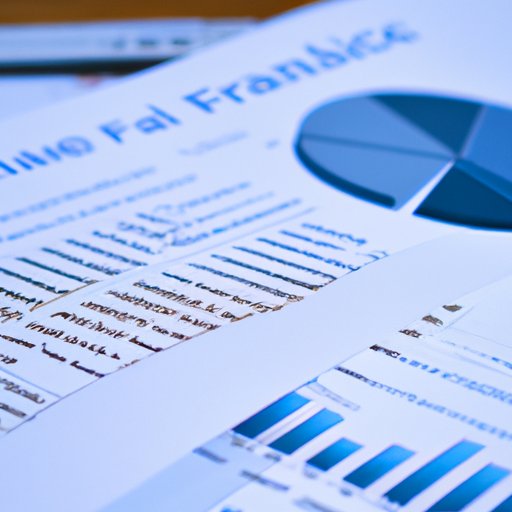Introduction
Financial projections are an important part of any business plan or strategy. They provide insight into the company’s future performance and help investors evaluate the viability of the business. Financial projections are based on past and current data, as well as assumptions about the future. As such, they are not always accurate, but they can provide valuable insight into the potential success of a business.
Utilizing a Financial Modeling Tool
One of the most efficient ways to create financial projections is by using a financial modeling tool. A financial modeling tool is a software program that helps users create detailed financial models. It is designed to take the user through the entire process, from data entry to creating graphs and charts. The benefits of using a financial modeling tool include being able to quickly and easily create projections, being able to make changes and updates in real time, and having access to a variety of templates and resources.
When creating a financial model, it is important to follow a few steps. First, gather all necessary data, such as historical financial statements, projected revenue and expenses, and market trends. Next, enter the data into the financial modeling tool. Once that is done, the tool will generate projections for the future. Finally, review the projections and make any necessary adjustments.

Creating a Cash Flow Statement
A cash flow statement is one of the most important documents when it comes to financial projections. It provides an overview of the company’s incoming and outgoing cash flows. This document is useful for understanding the company’s liquidity, as well as its ability to meet short-term obligations. When constructing a cash flow statement, there are a few guidelines to keep in mind.
First, start with the opening balance. This should be the amount of cash the company had at the beginning of the period. Then, add any cash received from customers, investments, loans, and other sources. Subtract any payments made to suppliers, employees, taxes, and other expenses. Finally, subtract any capital expenditures such as equipment purchases. This will give you the ending cash balance.

Developing a Profit and Loss Statement
A profit and loss statement (P&L) is another essential document when it comes to financial projections. It provides an overview of the company’s income and expenses. This document is useful for understanding the company’s profitability and overall financial health. When constructing a P&L statement, there are a few guidelines to keep in mind.
Start with the gross revenue. This should be the total amount of money the company has earned from sales and other sources. Then, subtract any costs associated with generating the revenue, such as cost of goods sold and operating expenses. Subtract any taxes and interest expenses. Finally, subtract any non-operating expenses such as depreciation and amortization. This will give you the net income.
Crafting a Balance Sheet
A balance sheet is the last document needed for financial projections. It provides an overview of the company’s assets, liabilities, and equity. This document is useful for understanding the company’s financial position. When constructing a balance sheet, there are a few guidelines to keep in mind.
Start with the assets. This should include all of the company’s tangible and intangible assets, such as cash, inventory, accounts receivable, and intellectual property. Subtract any liabilities, such as debt and accounts payable. Finally, subtract any equity, such as retained earnings and common stock. This will give you the total equity.

Presenting Projections in Graphs and Charts
Graphs and charts are an effective way to present financial projections. Visual representations of data can help investors better understand the information, as well as compare different scenarios. There are a few best practices to keep in mind when presenting projections in graphs and charts.
It is important to choose the right type of chart for the data. For example, a line chart is best for showing trends over time, while a bar chart is best for comparing different categories. Additionally, it is important to clearly label the axes and title the chart. Finally, it is important to use colors to differentiate between different elements. This will make the chart easier to read and understand.
Conclusion
Financial projections are an important part of any business plan or strategy. They provide insight into the company’s future performance and help investors evaluate the viability of the business. To create accurate financial projections, it is important to utilize a financial modeling tool, create a cash flow statement, develop a profit and loss statement, craft a balance sheet, and present projections in graphs and charts. By following these steps, businesses can ensure their financial projections are accurate and effective.
(Note: Is this article not meeting your expectations? Do you have knowledge or insights to share? Unlock new opportunities and expand your reach by joining our authors team. Click Registration to join us and share your expertise with our readers.)
